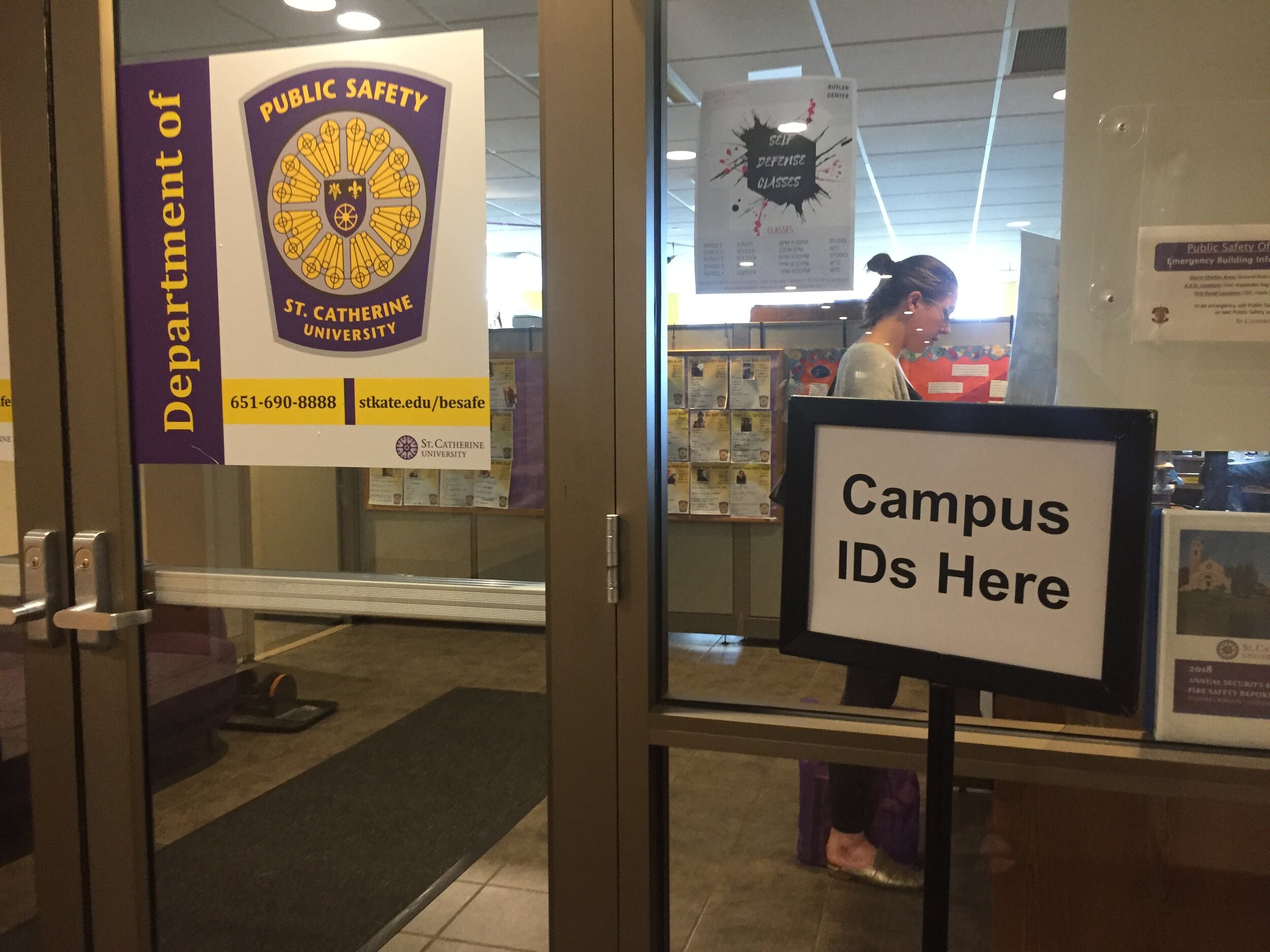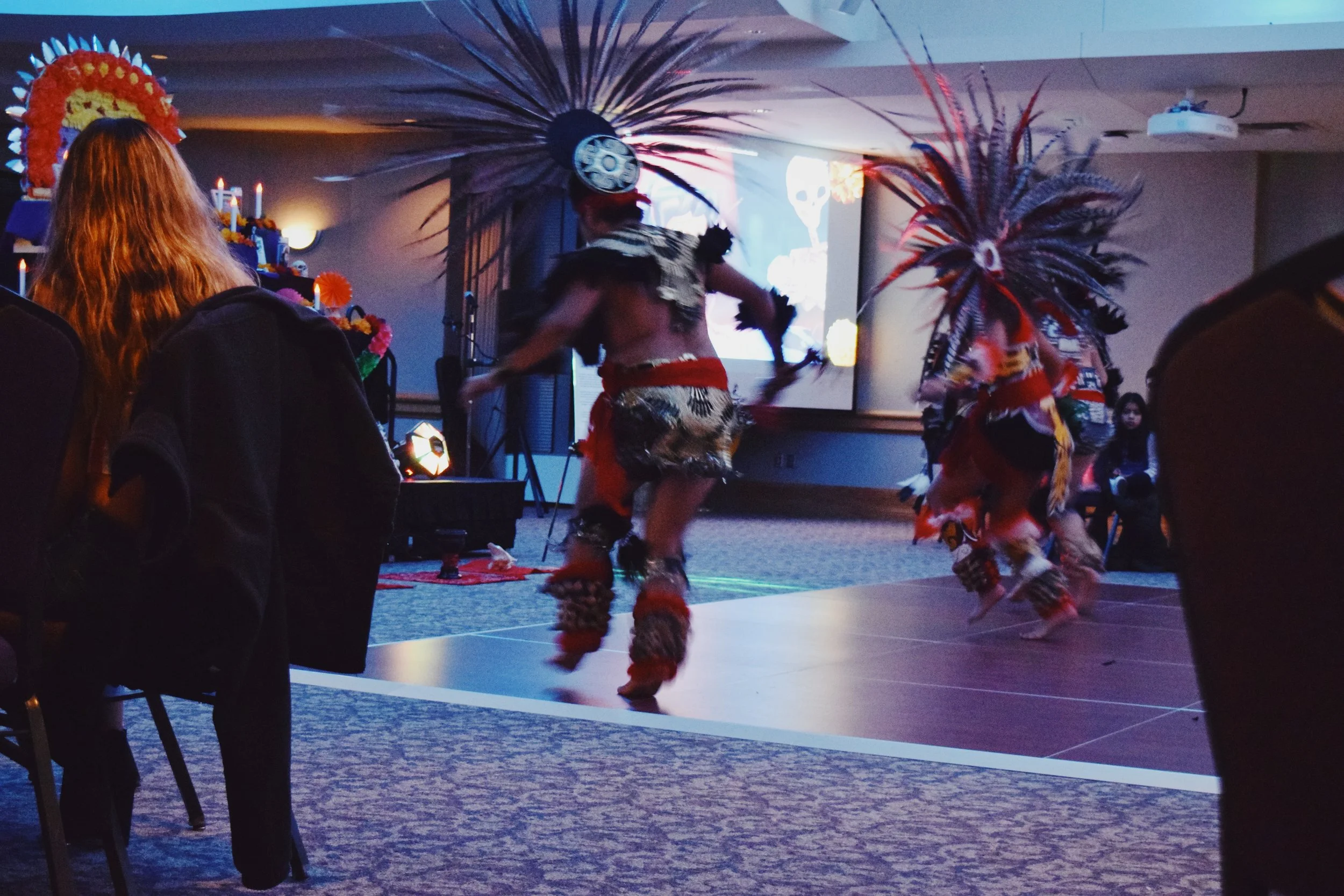What's Going on in the library? Part II: Integration Details, Community Reactions
As October came to a close, so did the final chapter of the St. Catherine University Public Safety department’s move from the second floor of the Couer de Catherine (CDC) to the first floor Library. While this transition brought about many positive changes to the St. Kate’s community, it also led to some uneasy feelings amongst some. I discussed this transition with key faculty members that felt the direct affects of this transition, in order to discover different perspectives regarding the success of this integration..
The Wheel previously explored the fundamentals of this transition in the article, “What’s Going on in the Library?”. The campus library (and associated departments) recently underwent structural and functional changes, after losing physical space due to Public Safety's move from their temporary location on 2ndfloor CDC into the library.
Public Safety originally resided in the basement of the small building behind Derham Hall. However, when the building became infested with black mold, Public Safety quickly needed to find a new home. They set up temporary shop in a community lounge located on the 2nd floor of the CDC. “There was no other good place to put them at the time,” said Angela Riley, CFO and Co-Chair of the Integration Work Group.
Temporary Public Safety space.
Public Safety's residency in the lounge was never intended to be a permanent solution for many reasons. In an interview with Victor Juran, Director of Public Safety, he enlightened me as to what problems that space created for the efficacy of Public Safety. For starters, the lounge had an entire wall of windows. “The windows were a concern with bad weather,” said Juran, “because you don’t want to be relocating Public Safety during an emergency.”
In addition, the lack of available space in the lounge created issues of privacy and confidentiality for students who needed Public Safety for a personal emergency, such as reporting an assault. “We’ve had people come in and have to tell us about stuff they maybe don’t want the world to know about,” said Juran. The temporary location did not accommodate for any private space to discuss such matters.
“When we started integration more broadly,” said Riley, “we knew we had the desire to give the community back this lounge…that space had been lost and it was very much the Student Senate’s desire to get that space back.” Riley discussed with me how the decision to move Public Safety specifically to the library came to be. The main concerns she discussed were finding a place that could fulfill everybody’s needs, while having enough physical space to actually do it and while staying within a $10 million total integration budget. “We looked at every building in St. Paul to see if there was a logical place for their [Public Safety] footprint to move to,” said Riley.
While other options were on the table, the Library reportedly the only spot with a centralized, accessible location that could be built adjacent to the original current library, while staying within the budget.
According to Toccara Stark, Vice President of Marketing & Communications, the Library lost a total of 5% of its total space to create a permanent home for Public Safety. The Academic Resource Center went through restructuring and was ultimately shut down. Media Services and the IT Department also merged and reorganized their services with the creation of the Tech Hub (located in the old computer lab). The old classroom was given as space to Public Safety, and rebuilt in the old Academic Resource Center room. Three group study rooms were added, all upgraded with new technology like wireless monitoring, desktop computers, and a new way to reserve study rooms online or in person.
Images of the new features in the Library: touch pads to book a study room, upgraded technology in group study areas, a new classroom, and three new group study rooms.
The creation of the Tech Hub made it possible to merge the work of Media Services and the IT Department, and provide more services for students. Modeled after Apple’s IT help desk, this space will be open to all students and faculty as a resource for any technological needs. New check-out forms are being created to allow people to check out equipment such as laptops or microphones for short periods of time. Short internet and equipment training sessions will be held in the designated ‘classroom’ portion of the Tech Hub for anyone to attend. Training for professors to teach them how to use classroom technology more effectively will become available.
“We have kind of been more of an internal IT support team rather than focusing on helping students,” said Jean Guezmir, Vice President and Chief Information Officer, “We really want to be support focused, we don’t want students having to go to three different locations to get the help they need. So we centralized all of that into this location [the Tech Hub].”
Images of the new Tech Hub.
Public Safety received a forever home, fully equipped with new technology, more advanced surveillance capabilities, a private and confidential Interview Room, and a conference room to use as a central location during an emergency. The separate front desk allows for workers to focus on helping students in the entryway, while a Batman-esque dispatch area, equipped with a wall full of TVs, various monitoring systems and camera surveillance, allowing for workers to be more efficient and successful in the help they provide.
“When you look back at how we were doing our operations before, we are very reactive versus wanting to be proactive,” said Juran.”We are now taking more of a centered approach. It’s been a nice move for us. It helped us to improve our services to the community.”
Images of the new Public Safety space: front desk, dispatch area with multiple wall monitors, worker desks, kitchenette area, supplies closet, worker lockers, offices, and care kits
While there are some definite positive aspects of this transition, there are still negative harbored feelings about the situation. Students and staff alike felt as if they had no say in the decision, that communication was non-responsive, and that the library environment was being put in jeopardy. Some communication occurred with the community after the news of the integration broke. President Roloff held a meeting for people to express and discuss their feedback on the decision, which was well attended. Students and staff had the opportunity to become part of work groups and community discussions to advocate for the sanctity of the library space. However, in the end the decision to move Public Safety to the library was final.
Research librarian Amy Mars shared her opinion on the situation, saying, “From my perspective as a librarian, I am concerned about how these space changes will affect students, faculty, and staff. I don’t speak on behalf of the library but I can say that library staff members did everything in our power to advocate for those who use library space and to offer alternative solutions but ultimately we were told this was the only feasible space for public safety.”
“Every effort is being made to include all members of the campus community in the process and in these conversations to gather input,” said Stark when asked how student and staff comments are being received. “This feedback is taken into consideration when making decisions related to the campus integration, even if the outcome is different than the comments as we strive to make the best choices for everyone.”
The majority of construction and movement in the Library is over now. People are now beginning to adjust to the changes. The new services are being used. The Tech Hub is now open. The Dew Drop Lounge has reopened as a community space. Public Safety is all moved in and settling into their new home.
“I hope moving forward, decisions like these can be made in a way that is more transparent, community-driven, and democratic,” said Mars, “but I also understand that with space and financial constraints, there are sometimes no popular decisions. As we undergo this transition, I invite students and others to share their concerns, ideas, and hopes for what the library can be so that, as a community, we can work together to make these changes happen."



























